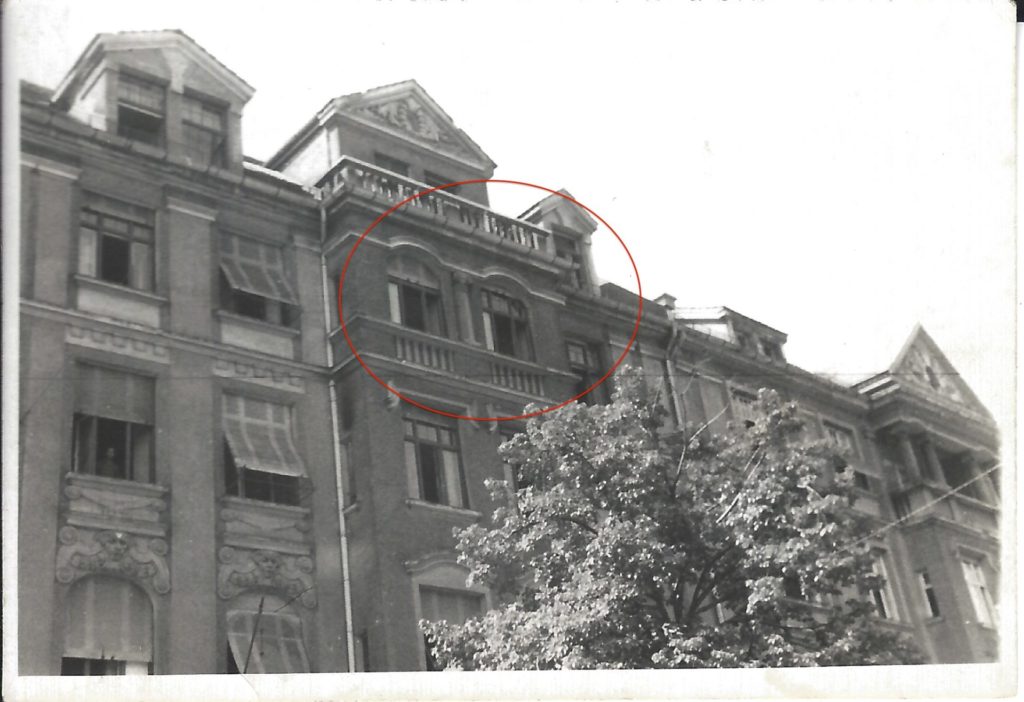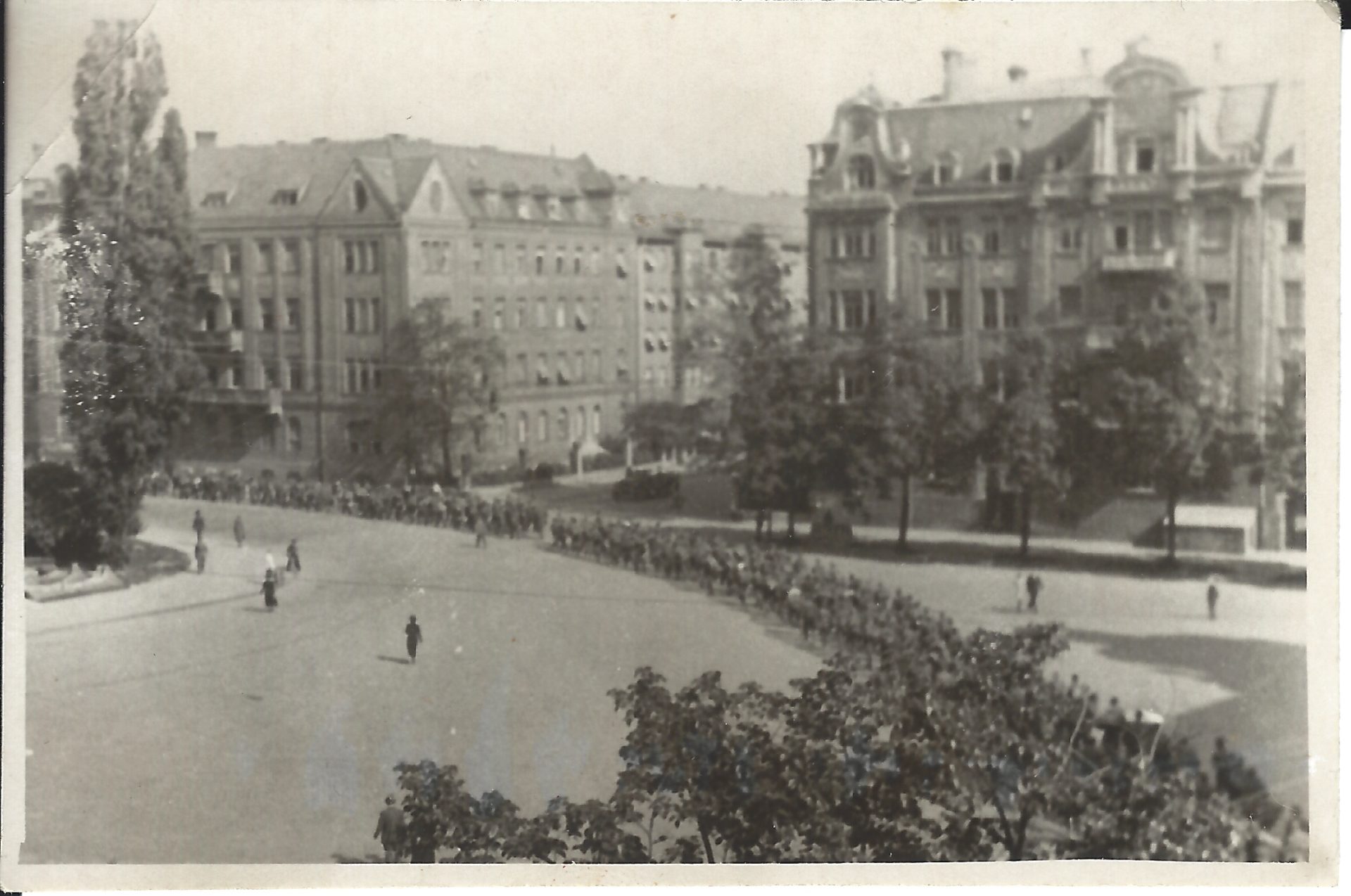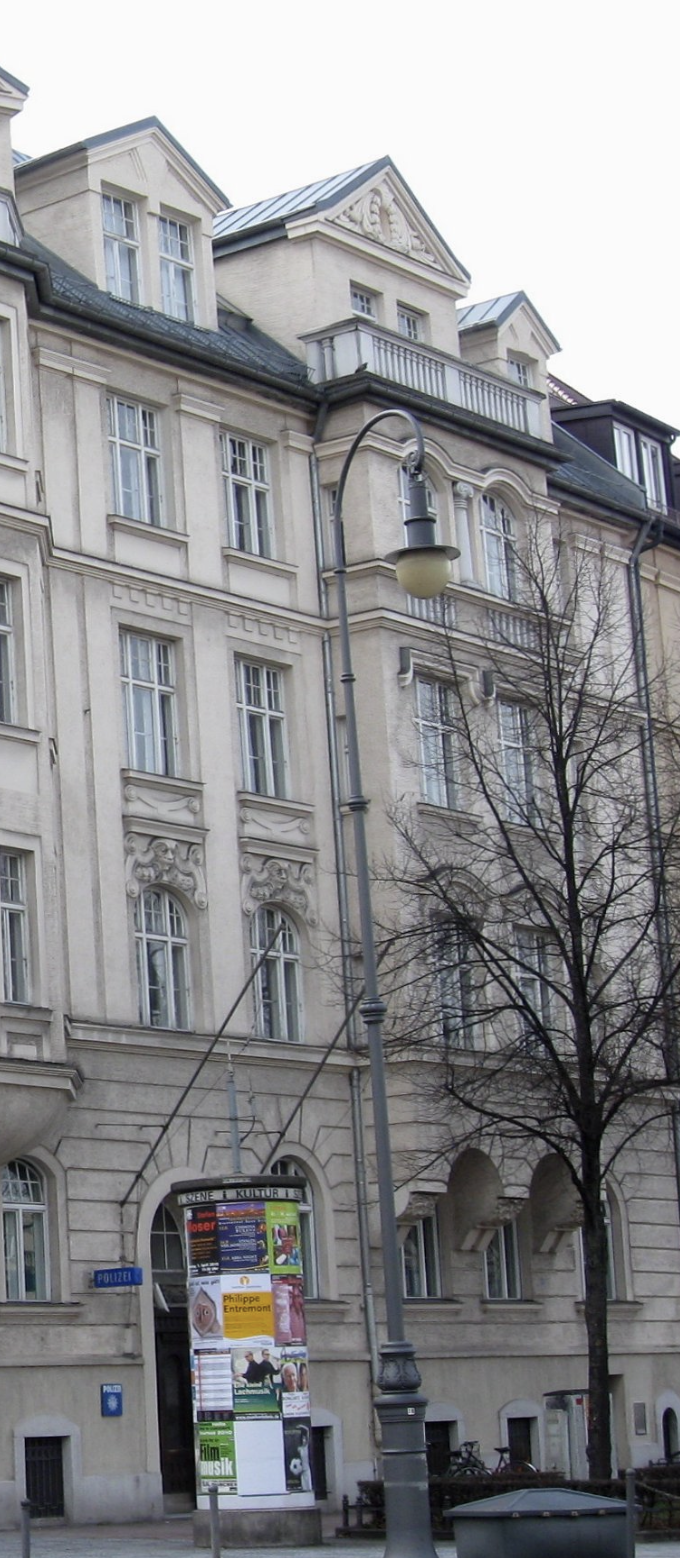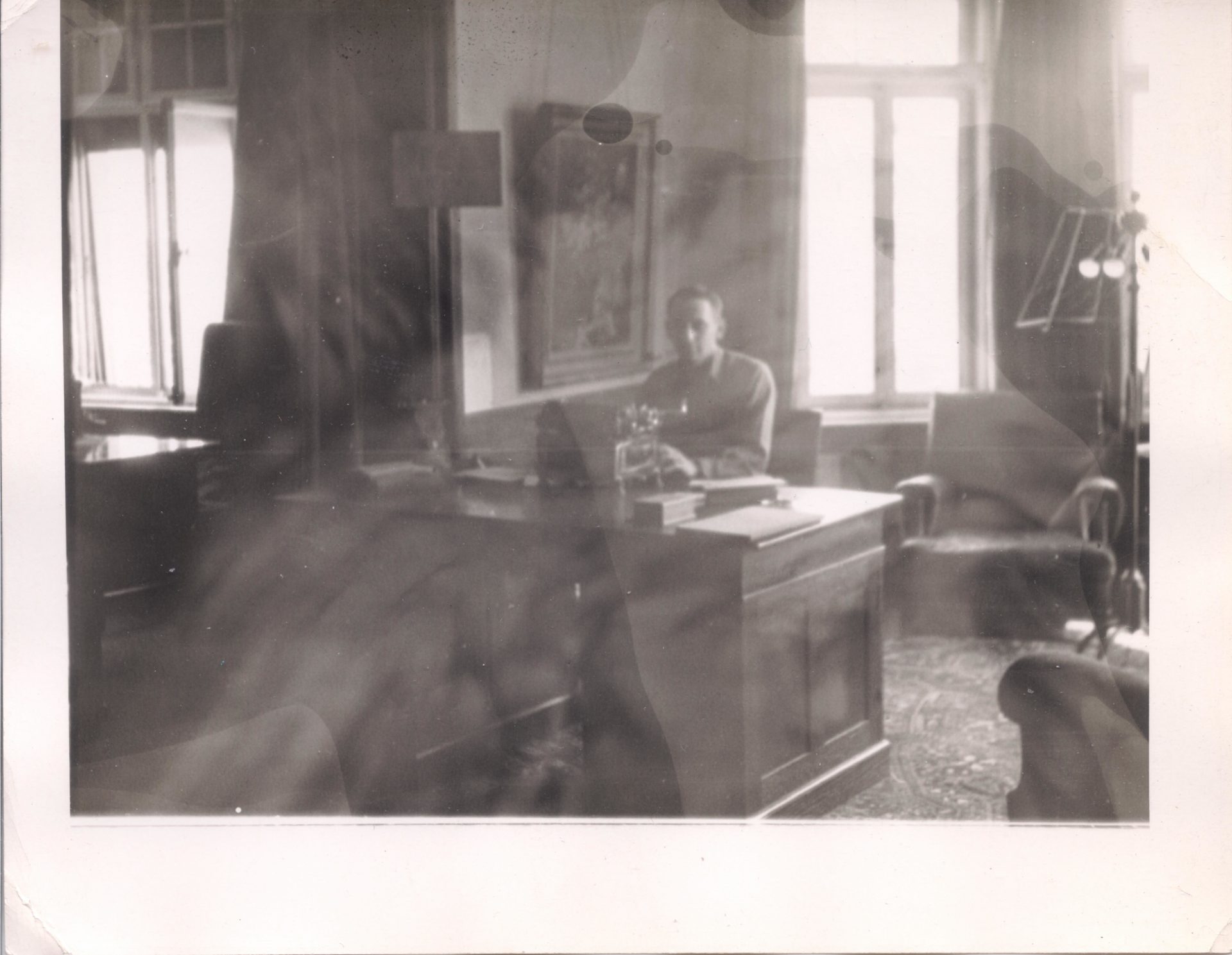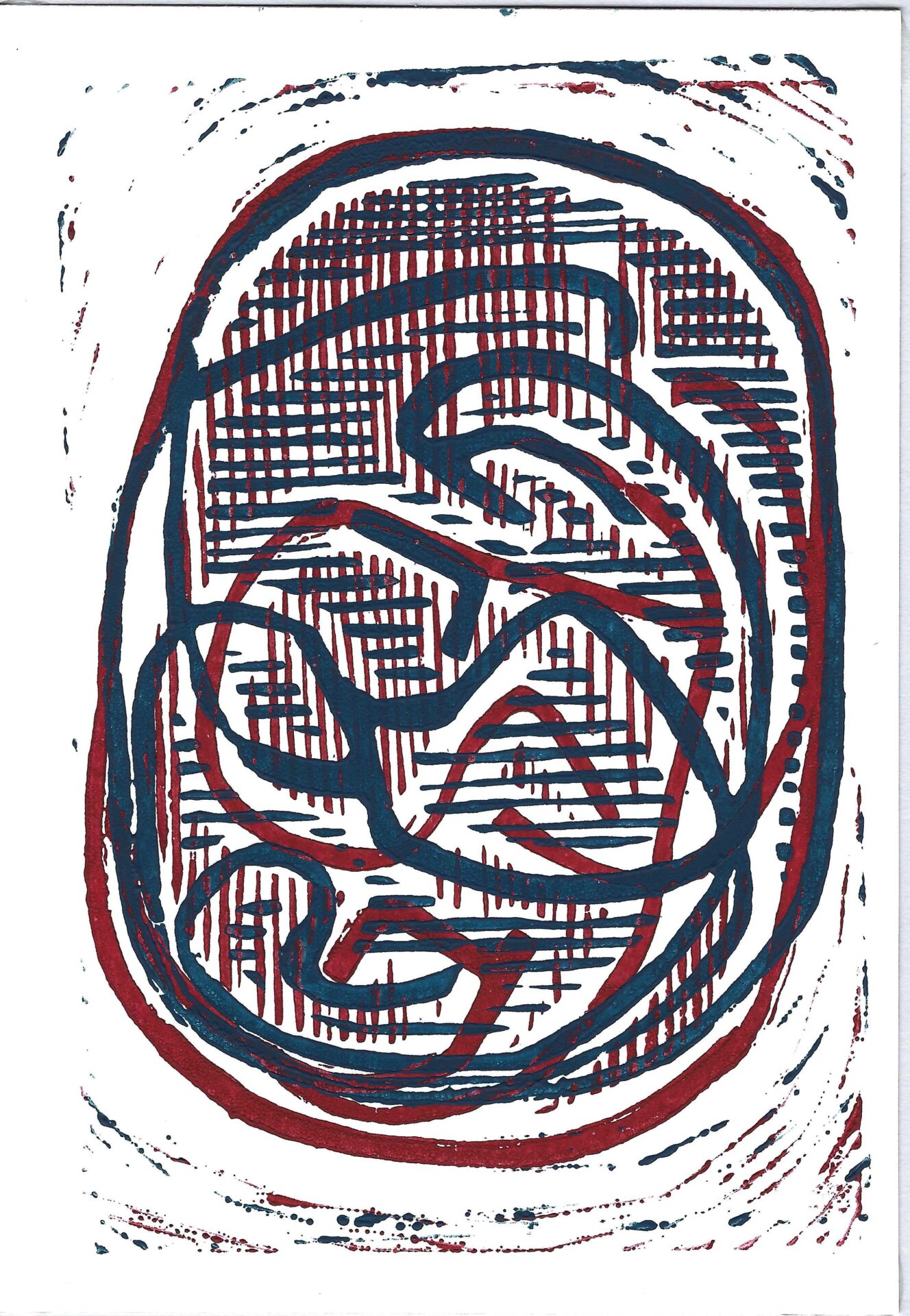Today, January 14, 2023, marks the one-hundred-thirty-first anniversary of the birth of Martin Niemöller (born in 1892).
Today is also the birthday of our niece Nora, who has long been aware of Martin Niemöller and his poem.
Niemöller, creeping normality, and other analogies
The son of a Lutheran pastor, Niemöller was raised in a very conservative home in Lippstadt and Elberfeld. As a young man, he was an antisemite and, initially a Hitler supporter. Nonetheless, though he maintained many of his anti-Jewish ideas, he grew to oppose the Nazification of German Protestant churches. Because of these activities, he was imprisoned in the Sachsenhausen and Dachau concentration camps (till April 1945).
After the war, on 6 January 1946, Niemöller confessed and repented for the error of his ways in a speech in Frankfurt for the Confessing Church. However, Niemöller’s confession, rewritten as the poem: “First they came…” was written nearly a century after similar observations on how progressions might occur were made.
Among the earliest, were experiments on frogs’ responses to slowly heated water. German physiologist Friedrich Goltz hoping to find the location of the soul, showed that a frog with its brain would attempt to escape water as it is slowly heated. However, if its brain had been removed the live frog would remain and get cooked. This is the apologue for the boiling frog.
Other related analogies include (but are not limited to):
Perhaps because of its poetic form and the simplicity of its expression Niemöller’s confession has begun to serve as a stand-in for these various analogies and thereby maintains its relevance.
But it’s at Dachau where Niemöller’s story (geographically and temporally) comes close to mine.
Hurvitzes visit Dachau
Nathan Hurvitz, PFC
Dad listed his unit — Company A, 179th Infantry Regiment, 45th Division. Jay was able to find a book, totally online — The story of a regiment, a history of the 179th Regimental Combat by Warren P. Munsell. The author closes his introduction with:
Hitler’s Apartment,
Munich, Germany
May, 1945
and later notes:
The 179th C.P. was set up on the east bank of the Isar, in the apartment that was Adolph Hitler’s private residence in Munich! After the initial treasure hunt, everyone settled down to carry out the 45th’s mission-the occupation of the city.
The next paragraph reads:
The 2nd Battalion joined the 3rd as a T Force, guarding buildings in the metropolitan area. The 1st Battalion organized riot squads and manned guard posts in Dachau, that unforgettable blot on the record of the human race which, from its boxcars piled with dead to its starved bodies stacked like firewood awaiting the crematory, was Gen. Franz’s answer as to why Americans were fighting Germany.
Our father was stationed in and around Munich for a few months when the war ended (May 8, 1945).
He told us very few stories of his experiences as a GI, though one of them described a special role he had. Because he grew up in a Yiddish-speaking environment in an immigrant Jewish family in Cleveland, OH, his first language was Yiddish. His superiors in the Army in Germany figured that his Yiddish was good enough to stand in for German. He once reported having interviewed an “alte Yiddeneh” (“אַלטע ייִדענע” an old Jewish woman). His superiors were incredulous: “How could an old Jewish woman be alone and alive in the Munich area so late in the Nazi period?!” Our father’s experience with old women was only with old Jewish women and had no other word for this person. Perhaps it was because of his language “skills” that he was able to secure the specific apartment he had in “Hitler’s Apartment”.
He took a number of photos while there (and in the surrounding towns). He wrote home to our mother that he was billeted in an apartment overlooking a “Platz” (which he circled on the back of this photo and I have circled on the front).
From there he was able to photograph this “parade of German prisoners”.
In 2014, through correspondence with a colleague who spent time in Munich, I was able to learn that the building still exists and that the apartment in question, indeed overlooks Prinzregentenplatz.
I was able to independently confirm the report in Munsell’s book and our father’s reporting of his own experience. What I’ve not been able to confirm is Dad’s mentioning that he worked at what had at one time been Hitler’s desk. He had a photo of himself taken sitting at the desk he so designated. Interestingly in 2017, David Petronis planned to bring a desk he claimed to be from Hitler’s 1930s-era apartment to a Gun and Militaria Show, but after a controversy developed about it, Petronis backed down. We can “confirm” that Dad mentioning working at “Hitler’s desk”. However, we can’t (yet) confirm that the desk he sat at in the following photo was really Hitler’s desk.
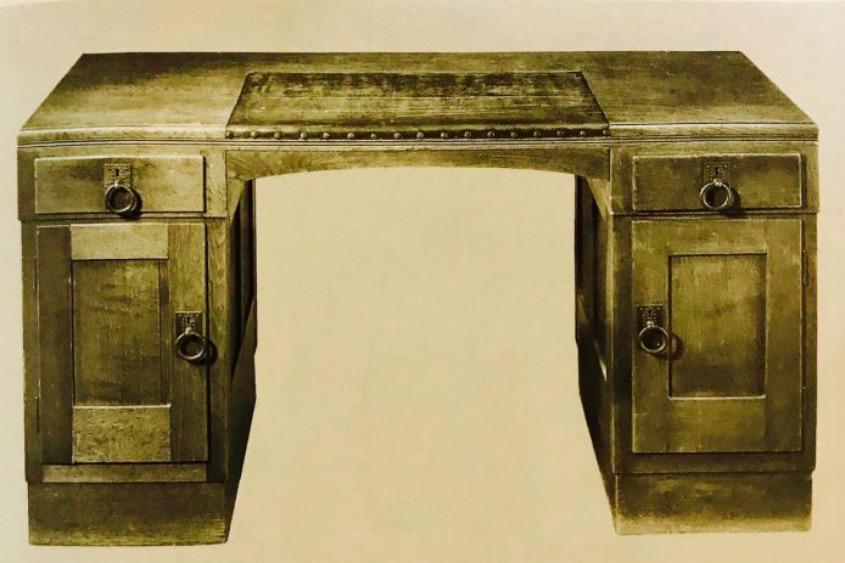
Not to normalize him in any way, nonetheless, if I were Hitler, I’d use the desk Dad sat at!
the YIVO essay contest
In 1945, YIVO announced an essay contest on the theme of “My Experiences and Observations as a Jew and a Soldier in World War II.” Fifty-two essays were received as submissions and in December 1946, Yedies fun YIVO [News from YIVO] reported on the award of prizes to the winners.
Dad’s essay was one of those 52 submitted and shared the first prize. It was likely at “Hitler’s desk” that he wrote the letters that became the award-winning essay.
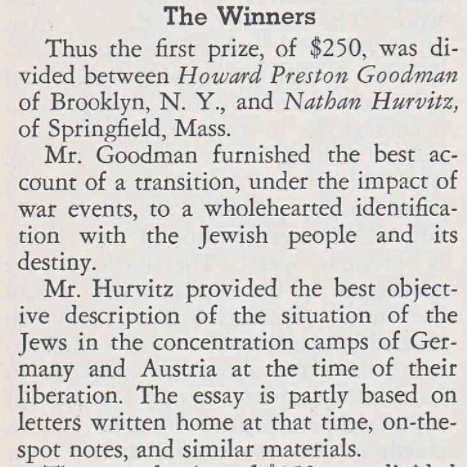
His essay was based on visits he made to Allach and Dachau concentration camps shortly after their liberation as well as the town of Freising, further to the northeast of Munich (and the camps). While in Freising he had his photo taken at an intersection with signs pointing to Dachau and Munich. Many years later (around 1980), he and Mom had the opportunity to travel to Europe and they returned to somewhere in the area. There, Mom took a photo of him, as though re-enacting the photo from 1945.
Rabbi Mark Hurvitz
On our travels through Europe in 2006 Debbie and I spent a few days in Munich. I’d long known of the photograph and had a copy of it with me. While preparing to search for the intersection I saw a sign reading “Freising”. This triggered a memory in me that the photo was actually taken, not in Munich, but Freising, and we set out to find the location.
After reproducing (updating) Nathan Hurvitz’s photo in Freising, we drove on to Dachau.
We wrote at the time:
It does not surprise me that the people of Dachau would want to have a separate Wikipedia article for their town, distinct from the concentration camp that bears the same name. Yet, the two are so close, and the camp is at the base of the hill on which the old town stands, that it is hard to accept that the residents of the 1930s-1940s did not know what was happening in their back yard.
At the camp, we we able to attach ourselves to a tour given by (Macintosh user) Phil Bradley. He gave a very good, thorough, intensely expressed tour.
“Dachau” seems synonymous with “concentration camp” the way the “Auschwitz” is synonymous with “death camp”.
It is a place of intense evil, calculated sadism.
I once again experienced that cold, choking, that swelled through me at Auschwitz and at Terezin. You might think that I might become inured to it; emotionally calloused.
Can that happen?
Towards the end of the tour we saw a short film that included footage of the survivors.
Debbie mentioned afterwards that she needed to close her eyes, [it was] hard to see the brutality.
I have always felt the need to keep my eyes wide open.
If this is what was done to people in full view of the perpetrators and seen by those first witnesses who captured the scene on celluloid, I owe it to those, whose images were captured… to look them in the eye and recognize the humanity that others attempted to deny them.
Niemöller’s confession
Niemöller is now known primarily for the poetic form of a 1946 post-war confessional:
First they came for the socialists, and I did not speak out—
Because I was not a socialist.Then they came for the trade unionists, and I did not speak out—
Because I was not a trade unionist.Then they came for the Jews, and I did not speak out—
Because I was not a Jew.Then they came for me—and there was no one left—
to speak for me.
…there was no one left–
To speak for me
“Rhinocerization”
Oddly enough, similar to the way that “first they came…” has become a shorthand for references to the Niemöller poem, the term “Rhinocerization” became a shorthand for references to the Ionesco play in Israel when it was first used in 1962. However, it did not become popular until Amos Oz used it in 1972 when he used the infinitive form of the verb: (להתקרנף, lehitkarnef).
Jay reported to me that on January 6, on Israel’s Channel 12 news, Dana Weiss interviewed Aharon Barak, Chief Justice of Israel’s Supreme Court from 1995 to 2006. Barak made it clear that the current government represents a serious danger to Israeli democracy. The story was also picked up and published in the English language The Times of Israel. At the end of the interview, Barak paraphrased the classic Niemöller quote:
אל תהיו באותו מצב שכשאמרו שהורגים את הקומוניסטים הוא אמר ‘מה זה אכפת לי? אני לא קומוניסט’. ואחר כך, כשהורגים את הליברלים הוא אמר ‘מה אכפת לי מליברל?’ ובסוף הוא אומר ‘כן, אבל הורגים את משפחתי’ ואז לא היה לו למי לפנות. זה מה שעשוי לקרות. והזעקה שלי… את פתחת את השיחה בינינו ‘אז למה אתה מדבר עכשיו?’ אני רוצה למנוע. אני רוצה להיות ישר עם עצמי ולהיות משוכנע שאני עושה כל מה שאני יכול לעשות”.
Don’t be in the same situation that when they said they were killing the communists he said ‘What do I care? I’m not a communist’. And then, when the liberals were being killed, he said, ‘What do I care about a liberal?’ And at the end he says ‘yes, but they are killing my family’ and then he had no one to turn to. This is what might happen. And my cry… you started the conversation between us ‘so why are you talking now?’ I want to prevent I want to be honest with myself and be convinced that I’m doing everything I can do.”
the buttons
Who would wear either of these buttons? I’ve never seen anyone do so.
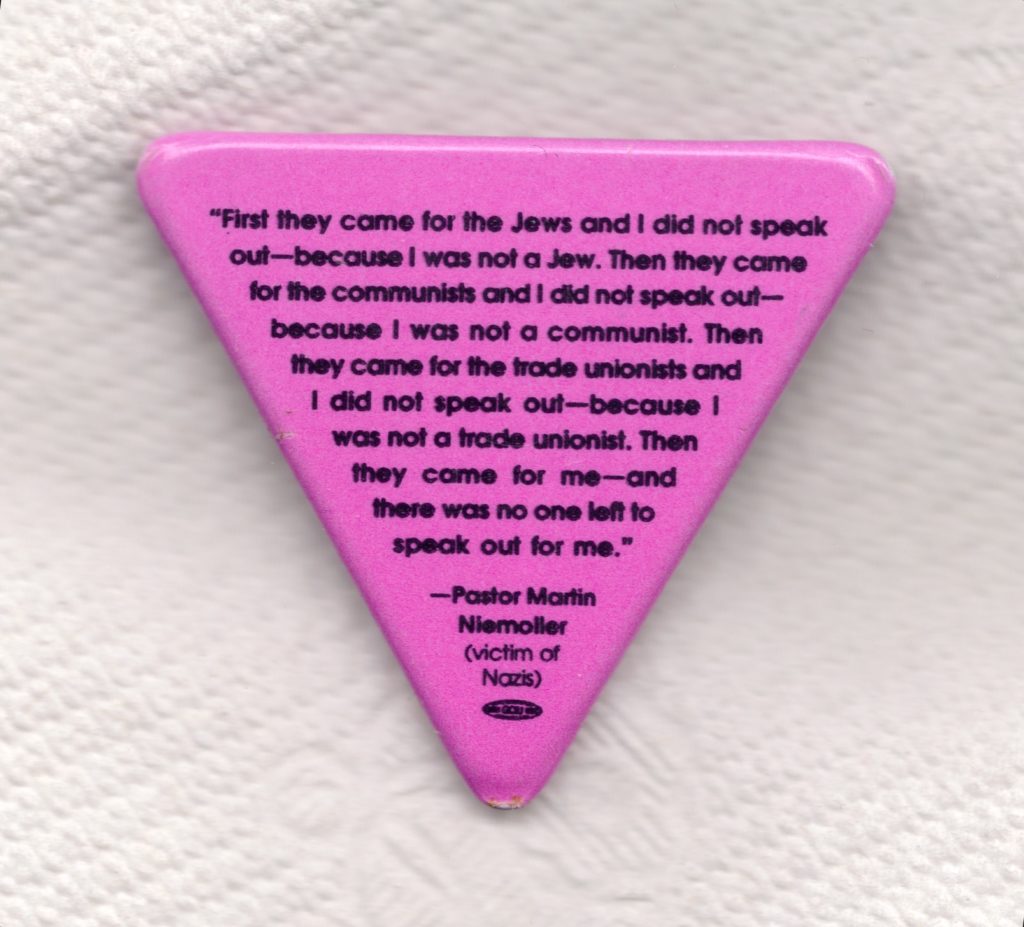
| Date: | circa 1986 |
| Size: | 4.4 triangle |
| Pin Form: | clasp |
| Print Method: | celluloid |
| Text: | “First they came for the Jews and I did not speak out—because I was not a Jew. Then they came for the communists and I did not speak out— because I was not a communist. Then they came for the trade unionists and I did not speak out—because I was not a trade unionist. Then they come for me—and there was no one left to speak out for me.” —Pastor Martin Niemoller (victim of Nazis) |
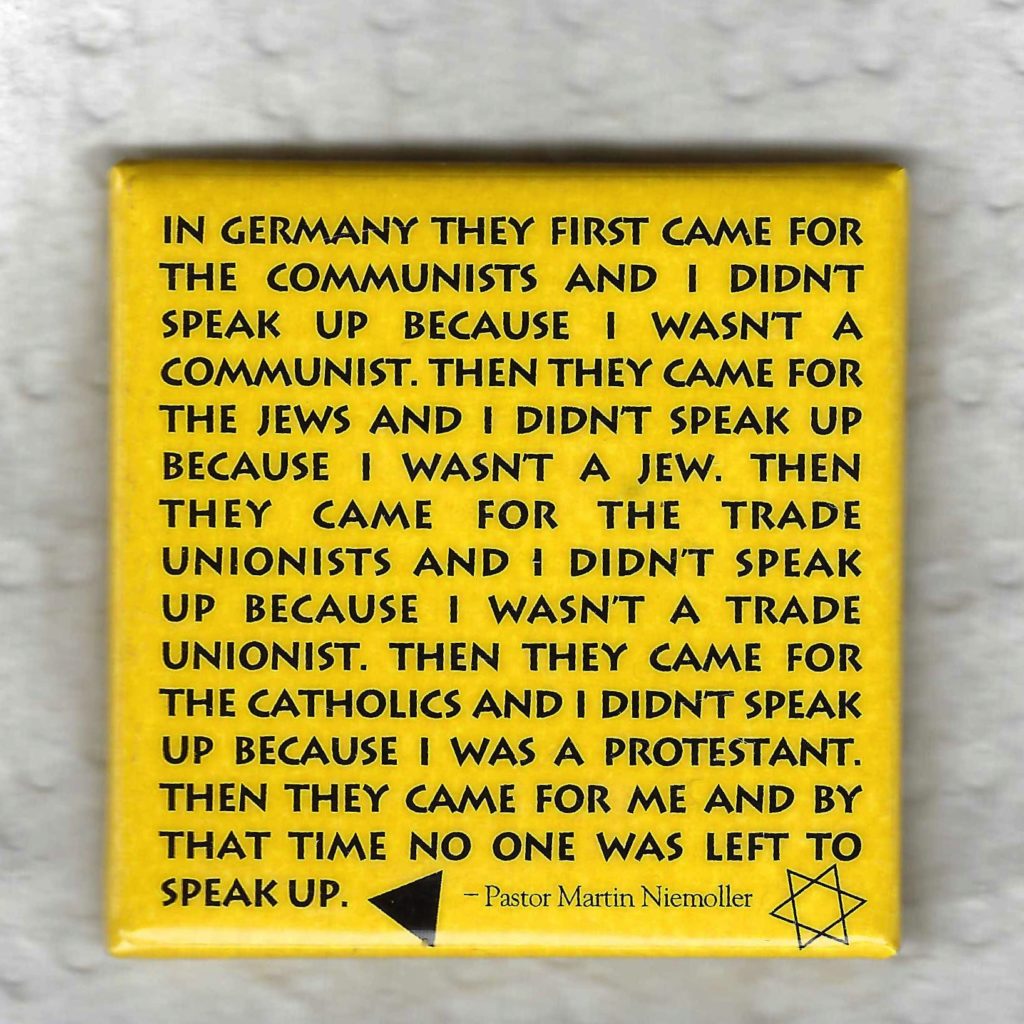
| Date: | 2019 |
| Size: | 4 x 4 |
| Pin Form: | clasp |
| Print Method: | celluloid |
| Text: | IN GERMANY THEY FIRST CAME FOR THE COMMUNISTS AND I DIDN’T SPEAK UP BECAUSE I WASN’T A COMMUNIST. THEN THEY CAME FOR THE JEWS AND I DIDN’T SPEAK UP BECAUSE I WASN’T A JEW. THEN THEY CAME FOR THE TRADE UNIONISTS AND ID DIDN’T SPEAK UP BECAUSE I WASN’T A TRADE UNIONIST. THEN THEY CAME FOR THE CATHOLICS AND I DIDN’T SPEAK UP BECAUSE I WAS A PROTESTANT. THEN THEY CAME FOR ME AND BY THAT TIME NO ONE WAS LEFT TO SPEAK UP. ‑Pastor Martin Neimoller |
your lapel buttons
Many people have lapel buttons. They may be attached to a favorite hat or jacket you no longer wear or poked into a corkboard on your wall. If you have any lying around that you do not feel emotionally attached to, please let me know. I preserve these for the Jewish people. At some point, they will all go to an appropriate museum. You can see many all the buttons shared to date.

